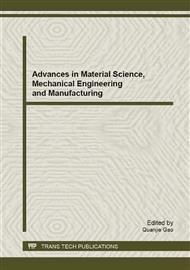p.100
p.105
p.110
p.113
p.118
p.121
p.124
p.128
p.132
Structure Design of the Hydraulic Support Sprag Units for Great Mining Height
Abstract:
In this paper,the importance of controlling side fall in great mining height coal face is introduced,and the stability of great mining height coal seam,the types and characteristics of sprag units are researched. Through the study this paper designs and confirms the sprag units structure which is fit for the great mining height hydraulic supports well. Hydraulic support sprag unit structure mainly have two types: simple aticulated type and four-bar linkage type.By the analysis and comparision of the characteristic of retractable type and folding type, the folding sprag units which has better integral rigidity is selected.It also provides the methods and experience for the the design of hydraulic support ,especially for the sprag units design of great height hydraulic supports.
Info:
Periodical:
Pages:
118-120
Citation:
Online since:
August 2013
Authors:
Keywords:
Price:
Сopyright:
© 2013 Trans Tech Publications Ltd. All Rights Reserved
Share:
Citation:


